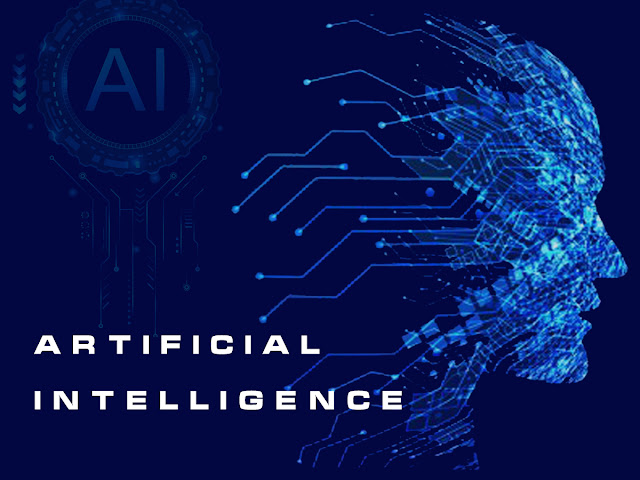What is the New AI?
The new AI is the latest iteration of artificial intelligence technology. This technology is based on machine learning algorithms that allow it to learn from data and experience, mimicking the human brain's neural networks.
The new AI can process vast amounts of data and make decisions based on that data. It is also designed to be more flexible and adaptable, allowing it to handle complex tasks with ease.
How Does the New AI Work?
The new AI technology is based on machine learning algorithms that allow it to learn from data and experience. It is designed to mimic the human brain's neural networks, enabling it to process vast amounts of data and make decisions based on that data.
- The new AI is also designed to be more flexible and adaptable, allowing it to handle complex tasks with ease.
What are the Applications of New AI?
The new AI has a wide range of applications, including virtual assistants, chatbots, self-driving cars, and predictive analytics. In the healthcare industry, the new AI technology is used to improve patient outcomes and diagnose diseases.
- The new AI is also being used in finance, cybersecurity, and manufacturing, among other industries.
Advantages of the New AI:
The new AI technology offers several advantages over previous versions of AI. Here are some of the benefits of the new AI technology:
Improved Accuracy and Efficiency:
The new AI technology is more accurate and efficient than previous versions of AI. It can process vast amounts of data and make decisions based on that data, reducing the chances of errors and increasing efficiency.
Better Decision-Making:
The new AI technology is designed to make better decisions based on data and experience. It can analyze complex data sets and identify patterns that humans might miss, making it an invaluable tool for decision-making.
Increased Automation:
The new AI technology is designed to automate tasks, reducing the need for human intervention. This can save time and money, while also improving accuracy and efficiency.
Challenges of the New AI:
While the new AI technology offers many advantages, it also poses some challenges. Here are some of the challenges of the new AI technology:
Data Privacy and Security:
The new AI technology relies on vast amounts of data, which raises concerns about data privacy and security. There is a risk that this data could be compromised or misused, leading to serious consequences.
Ethical Concerns:
The new AI technology raises ethical concerns about the use of AI in decision-making. There is a risk that AI could be biased or discriminatory, leading to unfair outcomes.
Job Displacement:
The new AI technology could lead to job displacement, as tasks that were previously performed by humans become automated. This could lead to significant social and economic consequences.
Which Industries are Embracing the Advancements in New AI Technology:
Artificial Intelligence (AI) is becoming increasingly prevalent in a wide range of industries, including healthcare, finance, manufacturing, and cybersecurity. These sectors are leveraging AI technology to boost their operational efficiency, enhance accuracy, and improve decision-making processes.
How Will New AI Technology Affect Employment:
AI technology is poised to disrupt the job market as tasks that were previously carried out by humans become automated. However, it also opens up new job opportunities, particularly in areas such as AI development and data analysis.
Comparison of Traditional Computing and New Ai Technology:
In traditional computing, a collection of instructions that specify what to do in each circumstance are programmed into computers. These instructions were created by humans and required a programmer to comprehend the issue, come up with a solution, and then create the necessary code to put the answer into practice.
- This method works well for solving clearly defined issues, but it may be constrained by the programmer's capacity to foresee every scenario and provide an appropriate set of instructions.
On the other hand Machine learning algorithms are used in new AI technology to allow computers to learn from data and make choices based on that learning. An AI system is taught on a large amount of data rather than being programmed with specific instructions, and it then applies that training to make predictions or decisions.
Here is a comparison table including key differences:
| Criteria | Traditional Computing | New AI Technology |
|---|---|---|
| Data Input | Structured data only | Structured and unstructured data |
| Processing Speed | Limited by processing power | Faster processing due to parallel computing |
| Decision-Making | Rigid and rule-based | Adaptive and data-driven |
| Learning Ability | Limited or nonexistent | Self-learning and continuous improvement |
| Scalability | Limited by hardware | Scalable to handle big data and complex tasks |
| Human Interaction | Limited or nonexistent | Natural language processing and conversational interfaces |
Conclusion:
The proliferation of AI technology is revolutionizing the future of technology, unlocking new possibilities and innovations. The advantages of AI technology are manifold, including heightened accuracy, efficiency, and decision-making capabilities.
Nevertheless, there are also significant concerns regarding data privacy, security, and ethical considerations. It is imperative to address these issues responsibly and ethically as AI technology continues to evolve.







0 Comments